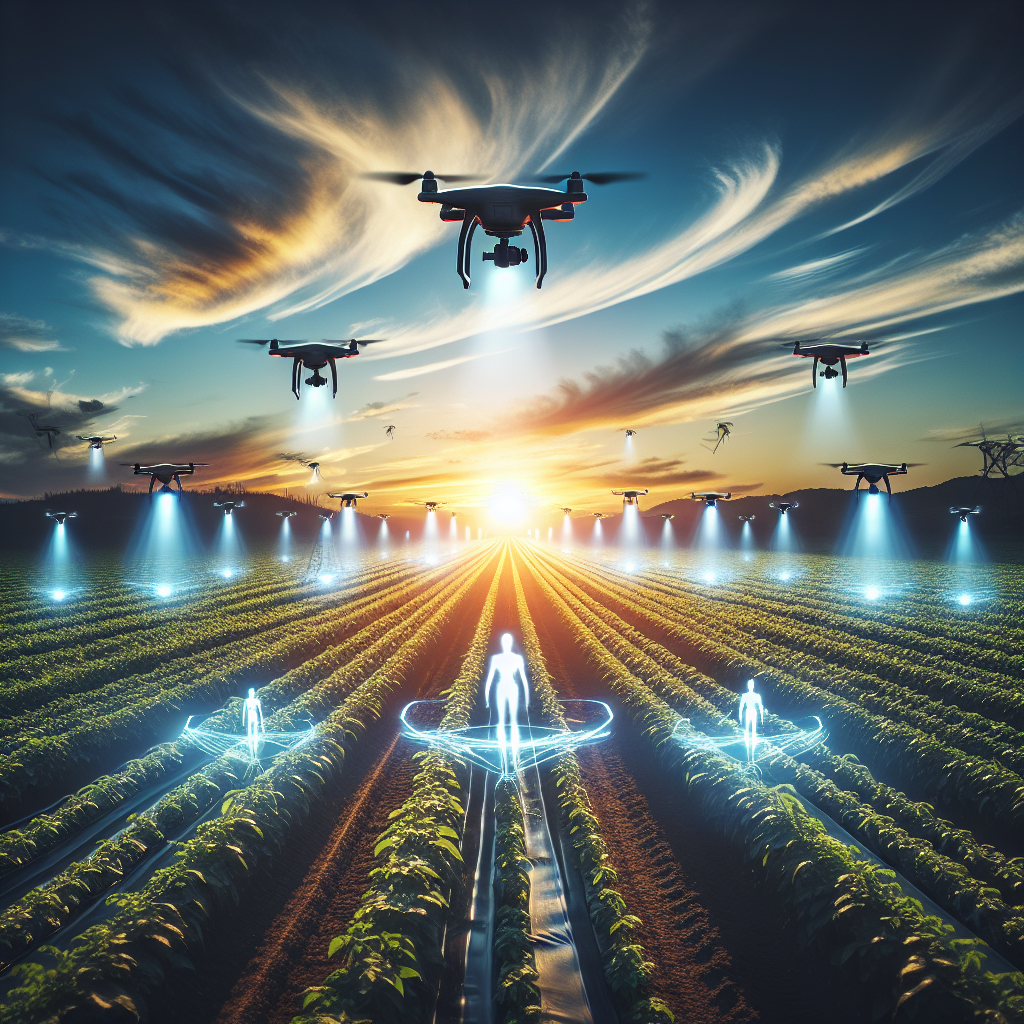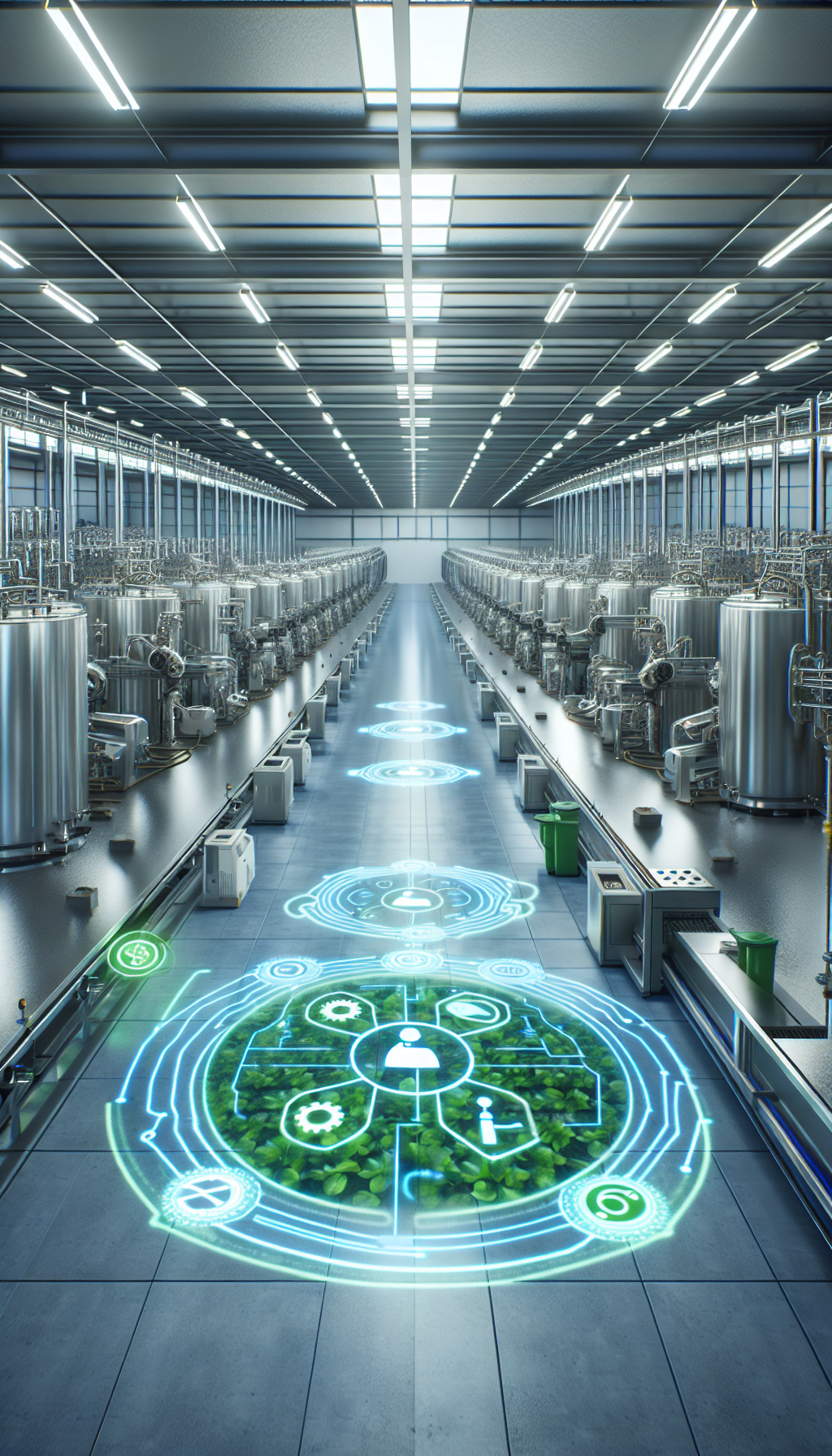The Scale of Food Waste
Food waste is a critical issue that affects both developed and developing countries, contributing significantly to global hunger and environmental degradation. According to the Food and Agriculture Organization (FAO), approximately 1.3 billion tons of food is wasted globally each year, which accounts for about one-third of all food produced for human consumption. This staggering level of waste occurs at various stages in the food supply chain, from production and processing to retail and consumption.
Breaking down the data further, it’s evident that food waste occurs differently across regions. In industrialized nations, a significant portion of waste happens at the consumer level, where food is discarded due to over-purchasing or misinterpretation of expiration labels. Conversely, in developing countries, food waste is more prevalent at the production and processing stages due to inadequate infrastructure and logistical challenges.
| Stage | Developed Countries | Developing Countries |
|---|---|---|
| Production | 10% | 30% |
| Processing | 20% | 40% |
| Consumption | 50% | 10% |
Efforts to address food waste are increasingly turning towards innovative technological solutions, with AI playing a pivotal role. By integrating AI into various points of the supply chain, businesses and governments are beginning to optimize efficiency and reduce waste, thus addressing a substantial part of the global hunger problem.
AI-Powered Supply Chain Optimization
Artificial Intelligence (AI) is playing a crucial role in optimizing supply chains, significantly reducing food waste on a global scale. By employing advanced algorithms, AI can analyze vast amounts of data in real-time, identifying inefficiencies and suggesting improvements. This technology allows companies to better predict demand, ensuring that food is produced and distributed more effectively, minimizing surplus and spoilage.
One of the key areas where AI is making a difference is in demand forecasting. Traditional methods often fall short due to their inability to process complex variables such as weather patterns, consumer preferences, and economic fluctuations. AI, on the other hand, can integrate these factors, providing more accurate predictions. For instance, a supermarket chain using AI-driven demand forecasting was able to reduce its food waste by 20%, simply by adjusting order quantities based on predicted demand.
Another significant contribution of AI is in logistics and transportation. AI systems can optimize delivery routes, reducing travel time and fuel consumption. This not only cuts costs but also ensures that perishable goods reach their destinations in the freshest possible condition. Companies utilizing AI for route optimization have reported a decrease in food spoilage by up to 15%.
AI also enhances inventory management by continuously monitoring stock levels and automatically reordering items as needed. This prevents overstocking and understocking, both of which lead to waste. An illustrative example of AI in action is a food distributor that implemented an AI-based inventory system and saw a 30% reduction in expired products.
| Area | Impact of AI | Waste Reduction |
|---|---|---|
| Demand Forecasting | Improved accuracy in predicting demand | 20% reduction |
| Logistics and Transportation | Optimized delivery routes | 15% reduction |
| Inventory Management | Automated stock monitoring and reordering | 30% reduction |
Predictive Analytics for Crop Management
Predictive analytics plays a crucial role in optimizing crop management, significantly impacting efforts to reduce food waste. By leveraging advanced algorithms and data analysis, farmers can make informed decisions that enhance crop yield and minimize losses. AI-driven predictive models analyze vast amounts of data, including weather patterns, soil conditions, and crop health, to forecast potential issues and recommend timely interventions. This proactive approach ensures that crops are cultivated under optimal conditions, reducing the likelihood of waste due to unforeseen circumstances.
One of the primary benefits of predictive analytics in agriculture is its ability to provide real-time insights. Farmers can access detailed reports and visualizations that highlight trends and anomalies in crop growth. For example, a farmer might receive an alert indicating a potential pest infestation, allowing for early intervention and the application of targeted treatments. This not only preserves the crop but also minimizes the need for extensive pesticide use, promoting sustainable farming practices.
Moreover, predictive analytics facilitates more efficient resource allocation. By understanding the specific needs of each crop, farmers can optimize the use of water, fertilizers, and other inputs. This targeted approach not only improves crop quality but also reduces environmental impact. A typical use case involves using AI models to predict the exact amount of water required for irrigation, preventing both under-watering and water wastage.
To illustrate the impact of predictive analytics on crop management, consider the following data visualization:
| Year | Crop Yield Increase (%) | Reduction in Resource Use (%) |
|---|---|---|
| 2020 | 15 | 10 |
| 2021 | 20 | 15 |
| 2022 | 25 | 18 |
This table highlights the progressive improvements in crop yield and resource efficiency achieved through the application of predictive analytics from 2020 to 2022. As the technology continues to advance, it is expected that these gains will further contribute to reducing food waste globally.
Smart Packaging and Food Preservation
Smart packaging is revolutionizing the way we approach food preservation, significantly reducing waste and extending shelf life. By integrating AI-driven sensors and other advanced technologies, smart packaging can monitor the freshness of food items in real-time. These intelligent systems provide consumers with crucial information about the condition of their food, allowing them to make informed decisions and minimize unnecessary waste. For example, a package equipped with a freshness sensor can alert users when the food is nearing spoilage, prompting timely consumption or preservation actions.
In addition to freshness monitoring, smart packaging also employs nanotechnology to enhance food preservation. This involves the use of materials that can inhibit bacterial growth, delay oxidation, and control moisture levels. These innovative materials ensure that perishable items remain safe and nutritious for longer periods. Furthermore, AI algorithms can analyze data collected from these packaging systems to predict spoilage patterns and optimize storage conditions, further extending shelf life and reducing waste.
AI-driven smart packaging is also playing a critical role in the supply chain by facilitating better inventory management. By providing accurate data on the freshness and quantity of stock, businesses can reduce over-ordering and minimize loss. This is particularly beneficial for retailers and distributors who need to manage large volumes of perishable goods. According to recent studies, the adoption of smart packaging solutions has led to a 30% reduction in food waste within certain supply chains.
The integration of AI in smart packaging is not only beneficial for businesses and consumers but also contributes to environmental sustainability. By reducing food waste, we can lower greenhouse gas emissions and decrease the strain on resources required for food production and disposal. As the technology continues to evolve, the potential for smart packaging to play a pivotal role in combating global hunger becomes increasingly evident.
Real-Time Inventory Management
Real-time inventory management is increasingly becoming a vital component in the battle against food waste. By leveraging AI technology, businesses can significantly enhance their inventory tracking and management processes. This advancement allows for more precise monitoring of food supplies, reducing the likelihood of overstocking or understocking, which often leads to wastage.
The implementation of AI-driven systems enables retailers and suppliers to maintain an up-to-date overview of their stock levels. For example, AI algorithms can analyze sales data and predict future demand with greater accuracy. This predictive capability ensures that food products are reordered only when necessary, thus minimizing surplus and spoilage. Additionally, AI systems can alert managers to items that are approaching their expiration dates, allowing for timely discounts or donations.
Incorporating AI in inventory management also facilitates better coordination across the supply chain. For instance, sensors and IoT devices can be used to track the condition and location of food products in real-time. This real-time data can be shared with all stakeholders, including producers, distributors, and retailers, ensuring that everyone has access to the same information and can act promptly to prevent waste. The following table illustrates the impact of AI on inventory accuracy and waste reduction:
| Metric | Before AI Implementation | After AI Implementation |
|---|---|---|
| Inventory Accuracy | 70% | 95% |
| Food Waste Reduction | 10% | 30% |
Moreover, the integration of AI in inventory management is not limited to large corporations. Small and medium-sized enterprises (SMEs) can also benefit from these technologies. By adopting scalable AI solutions, SMEs can enhance their inventory processes without significant capital investment, thus contributing to the global effort to reduce food waste and hunger. The following are key benefits of AI in inventory management:
- Improved demand forecasting
- Reduction in spoilage and waste
- Enhanced supply chain coordination
- Cost savings through optimized ordering
AI in Food Redistribution
Artificial Intelligence (AI) is playing a pivotal role in transforming the landscape of food redistribution, ensuring that surplus food reaches those who need it the most. By leveraging AI algorithms, organizations can efficiently match excess food from retailers, restaurants, and producers with charities and food banks. This not only helps in minimizing food waste but also contributes significantly to alleviating hunger. AI systems analyze vast amounts of data to predict where and when surplus food will be available, optimizing the logistics of collection and delivery.
One of the primary benefits of using AI in food redistribution is the enhanced efficiency it brings to the supply chain. AI-powered platforms often use real-time data analytics to track food supply and demand patterns. This data-driven approach allows for the creation of more effective distribution networks. For instance, AI can identify the shortest and most cost-effective routes for transporting food, reducing both time and energy consumption. This optimization is crucial in ensuring that perishable food items reach their destinations while still fresh.
In practice, several organizations have adopted AI technology to streamline their food redistribution efforts. For example, an AI-driven platform might use machine learning to analyze historical data and predict peak times for food donations and requirements. This allows for better planning and allocation of resources. Below is a table illustrating the impact of AI on food redistribution efforts:
| Parameter | Pre-AI Implementation | Post-AI Implementation |
|---|---|---|
| Average Delivery Time | 4 hours | 2.5 hours |
| Fuel Consumption | 150 liters/day | 100 liters/day |
| Food Waste Reduction | 20% | 45% |
- AI enables better prediction of food surplus locations.
- Efficiently matches surplus food with demand.
- Reduces cost and time in food transportation.
The integration of AI in food redistribution is a testament to its potential to drive sustainable solutions in the fight against global hunger. As technology continues to evolve, it is expected that AI will further enhance the effectiveness of food redistribution networks, ultimately contributing to a more equitable and sustainable food system worldwide.
Reducing Waste in Food Processing
Food processing is a critical stage in the food supply chain where significant amounts of waste can occur. However, with the advent of Artificial Intelligence (AI), companies are now better equipped to identify and mitigate these inefficiencies. AI systems can analyze vast amounts of data to pinpoint exactly where waste is happening and suggest measures to reduce it. By employing machine learning algorithms, processors can optimize their operations, leading to a reduction in waste generation and an increase in overall yield.
One of the key ways AI reduces waste in food processing is through predictive analytics. This involves using historical data to forecast potential issues in the processing line before they occur. For instance, AI can predict machine failures or identify anomalies in production that might lead to waste, thus allowing for timely interventions. Implementing these solutions not only minimizes waste but also enhances the efficiency of the entire processing operation.
Another area where AI contributes significantly is in quality control. Traditional methods often rely on manual inspections, which can be inconsistent and prone to error. AI-powered systems employ computer vision to automate the inspection process, ensuring that only products meeting the desired quality standards proceed further down the line. This technology not only reduces waste by preventing sub-standard products from being processed but also speeds up the production line.
| AI Application | Impact on Waste Reduction |
|---|---|
| Predictive Maintenance | Prevents machine breakdowns, reducing downtime and material waste. |
| Quality Control Automation | Ensures consistent quality, reducing rejection rates and reprocessing. |
| Process Optimization | Improves efficiency, reducing overproduction and resource waste. |
Consumer Engagement Through AI
Artificial Intelligence is not only revolutionizing the backend supply chain processes but also significantly enhancing consumer engagement in the fight against food waste. By leveraging AI-driven applications, consumers can make more informed decisions about their food purchases, storage, and consumption patterns. Smart kitchen appliances, equipped with AI, offer personalized meal planning by analyzing the contents of refrigerators and suggesting recipes that use soon-to-expire items, thus minimizing waste.
AI-powered apps are fostering a more direct connection between consumers and their food sources. These apps provide real-time data on product freshness, nutritional value, and even the environmental impact of their choices. For instance, AI can track the shelf life of products and send reminders or alerts to consumers to use certain items before they go bad. This proactive approach not only reduces household food waste but also encourages consumers to adopt more sustainable habits.
Moreover, AI is enhancing transparency and trust in the food supply chain, allowing consumers to trace the journey of their food from farm to table. This traceability is crucial for those who are conscious about the ethical and environmental implications of their food choices. Studies have shown that when consumers are informed about the journey of their food, they are more likely to engage in practices that reduce waste.
In conclusion, the integration of AI into consumer engagement strategies is a pivotal step towards achieving sustainable food systems. By empowering consumers with information and tools, AI not only helps in reducing food waste but also plays a crucial role in the global effort to combat hunger and promote sustainable consumption.
Sustainability and Environmental Impact
The integration of AI in combating food waste not only addresses global hunger but also significantly enhances sustainability and minimizes environmental impact. Sustainable practices are crucial in reducing the carbon footprint associated with food production and waste. AI systems optimize resource usage, ensuring that inputs such as water, fertilizers, and energy are utilized efficiently, thereby reducing wastage and promoting eco-friendly agricultural practices. These intelligent systems analyze vast datasets to predict crop yields and manage resources accordingly.
One of the key areas where AI contributes to sustainability is through the optimization of supply chain logistics. By predicting demand accurately, AI helps in reducing surplus production and overstocking. This reduction in excess production not only saves resources but also minimizes the emissions generated from transporting and storing surplus food. Moreover, AI-driven insights enable the identification of critical points in the supply chain where waste is most likely to occur, allowing for targeted interventions that further drive sustainability.
The deployment of AI in food waste management also contributes to environmental conservation by decreasing landfill usage. Food waste in landfills is a significant source of methane, a potent greenhouse gas. By diverting food waste from landfills through efficient AI-driven redistribution systems, the environmental impact is considerably mitigated. Additionally, AI technologies facilitate the conversion of food waste into valuable by-products, such as biofuels and compost, thus promoting a circular economy.
Furthermore, AI enhances the ability to monitor and report on sustainability metrics, providing transparency and accountability within the food industry. This data-driven approach enables companies to set and achieve sustainability goals, ultimately contributing to a healthier planet. The collaboration between AI technology and sustainable practices not only addresses immediate food waste concerns but also paves the way for long-term environmental benefits.
Challenges and Ethical Considerations
The use of AI in addressing food waste presents several challenges that need careful consideration. One of the primary challenges is the integration of AI systems into existing food supply chains, which are often complex and fragmented. Many stakeholders lack the necessary infrastructure and technical expertise to implement AI solutions effectively. Additionally, data availability and quality pose significant obstacles. In many regions, the lack of reliable data on food production, distribution, and wastage limits the potential of AI to make accurate predictions and recommendations.
Another crucial factor is the ethical considerations surrounding AI deployment in food systems. There is a growing concern about data privacy and security, as AI systems often require access to sensitive information. Ensuring that data is handled responsibly and ethically is paramount. Furthermore, there is the risk of technology exacerbating existing inequalities. For example, small-scale farmers may struggle to compete with larger, tech-savvy agribusinesses that can afford to implement AI solutions, potentially widening the gap between large and small producers.
- Integration challenges in fragmented supply chains
- Data availability and quality issues
- Data privacy and security concerns
- Risk of exacerbating inequalities
Ethical considerations also extend to the impact on employment. As AI systems become more prevalent in agriculture and food distribution, there is potential for job displacement, particularly in roles that are automated by technology. This raises important questions about the future of work in the food sector and the need for policies that support workforce transition and skill development. Equally important is the consideration of AI’s environmental impact, given the energy-intensive nature of artificial intelligence technologies. Ensuring that AI-driven solutions are sustainable and do not contribute to environmental degradation is essential for their long-term viability.
| Challenge | Impact |
|---|---|
| Integration into supply chains | Complexity and lack of expertise |
| Data issues | Limited accuracy of AI predictions |
| Privacy concerns | Need for ethical data handling |
| Job displacement | Potential loss of employment |
Future of AI in Food Waste Reduction
The future of AI in food waste reduction holds immense potential as technology continues to advance and become more integrated into agricultural and supply chain processes. AI-driven solutions are expected to become more sophisticated, enabling real-time data analysis and decision-making that minimize waste at every stage, from farm to table. As these technologies evolve, we can anticipate several key developments that will further enhance their effectiveness.
One of the most promising applications of AI is in predictive analytics, which can forecast demand with greater accuracy, helping producers and retailers adjust their supply accordingly. This can significantly reduce the amount of surplus food that often ends up wasted. The integration of machine learning algorithms will enable systems to continuously improve their predictions based on historical data and emerging trends. The following table illustrates some of the expected advancements in AI technology:
| AI Technology | Expected Advancement |
|---|---|
| Machine Learning | Improved predictive models for demand forecasting |
| Computer Vision | Enhanced sorting and quality control processes |
| Robotics | Automated harvesting and packaging to reduce human error |
Moreover, the adoption of AI in food waste reduction is likely to boost supply chain transparency and accountability. With AI-powered systems, stakeholders can gain insights into inefficiencies and areas of waste, allowing for targeted interventions. This transparency will be critical in fostering collaboration among producers, distributors, and retailers, ensuring that each entity works towards a common goal of sustainability. The following list outlines some benefits of increased transparency:
- Improved traceability of food products
- Enhanced collaboration among supply chain stakeholders
- Reduction of food loss during transportation and storage
In conclusion, the future of AI in food waste reduction looks promising, with technology playing a pivotal role in creating sustainable food systems. By leveraging AI’s capabilities, we can not only reduce waste but also address the pressing issue of global hunger, paving the way for a more efficient and equitable food distribution network.



